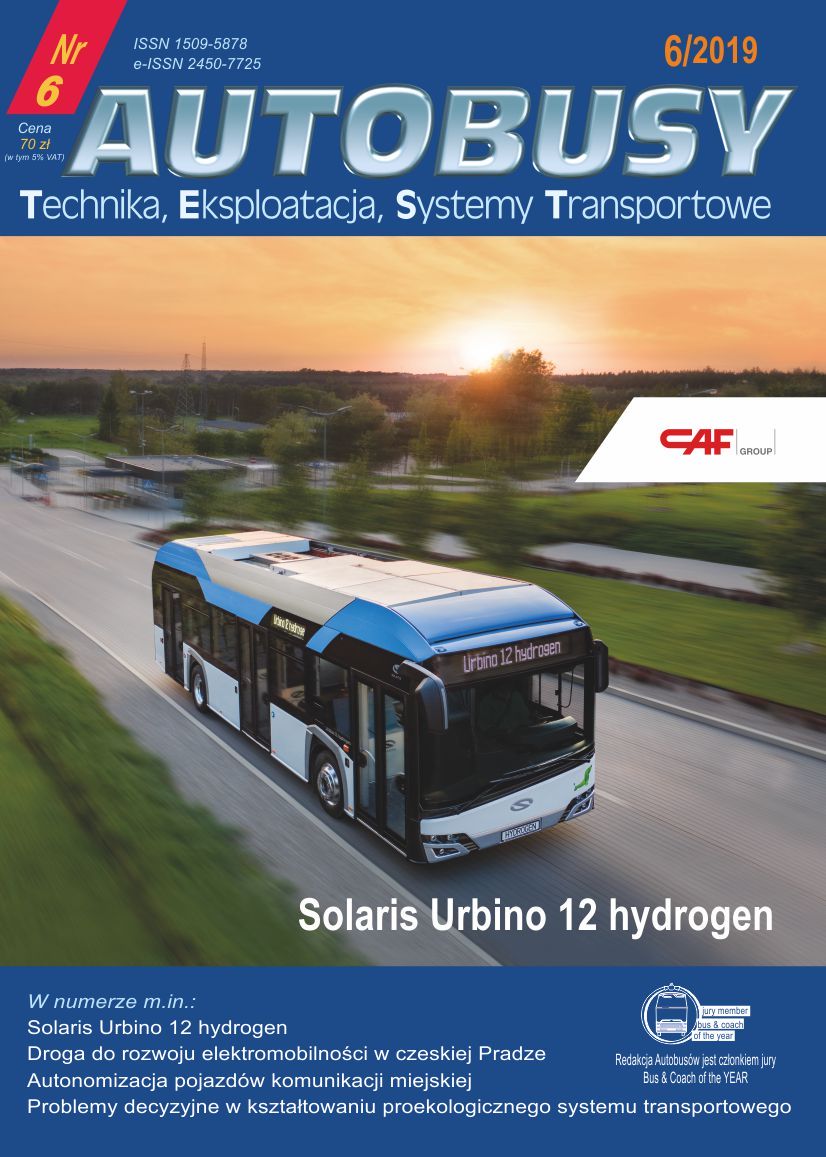Analysis of the simulation results of various particulate filter configurations in exhaust system of a spark-ignition engine
DOI:
https://doi.org/10.24136/atest.2019.162Keywords:
CFD simulation, GPF, PM emissionAbstract
The article presents the results of exhaust gas flow simulation by three configurations of a ceramic support placed in the engine exhaust system. The carriers differed in the cell density parameters along the entire length of the filter. A filter with a fixed CPSI (Cell per Square Inch) parameter, a filter with two different cell densities and a triple support were tested. For each element of the filter, boundary conditions have been introduced, which define the nature of the flow and define the type of surface of a given element. The composition of the exhaust gases whose flow is simulated was also determined. The initial conditions of the simulation include data on pressure, temperature and velocity. AVL Fire Aftertreatment was used to carry out the simulation. The program is a leading tool for CFD simulation in the field of internal combustion engines.
Downloads
References
Aikawa K., Jetter JJ., Impact of gasoline composition on particulate matter emissions from a direct-injection gasoline engine: Applicability of the particulate matter index. Int. J. Engine Res., 15, p. 298–306, 2013
AVL Fire 2014.2 software, AVL AST Documentation
Fuć P., Lijewski P., Sokolnicka B., Siedlecki M., Szymlet N., Analysis of exhaust gas flow through a particulate filter in the exhaust of the spark ignition direct injection engine, AIP Conference Pro-ceedings 2078, 020088, 2019
Gatti AM., Montanari S., Nanopathology, The health impact of nanoparticles, Taylor & Francis Group, LLC, 2008
Fuć P., Lijewski P., Siedlecki M., Sokolnicka B., Szymlet N., Analy-sis of particle mass and numer emission from an SI engine with direct fuel injection and a particulate filter, IOP Conference Series: Materials Science Engineering, vol. 421, (2018)
Merkisz J., Pielecha J., Lijewski P., Merkisz-Guranowska A., Nowak M., Jacyna M., Lewczuk K., Żak J., Exhaust emission measurements in the development of sustainable road transport, Journal of KONES Powertrain and Transport, Vol. 20, No. 2, 2013
Nowak M., Pielecha J., Comparison of exhaust emission on the basis of Real Driving Emissions measurements and simulations, VII International Congress on Combustion Engines, MATEC Web Conf. Vol. 118, 2017
Pielecha J., Merkisz J., Markowski J., Jasiński R., Analysis of Passenger Car Emission Factors in RDE Tests, 1st International Conference on the Sustainable Energy and Environment Development SEED 2016
Raza M., Chen L., Leach F., Ding S., A Review of Particulate Number (PN) Emissions from Gasoline Direct Injection (GDI) Engines and Their Control Techniques, Energies 6, 2018
Sokolnicka B., Szymlet N., Fuć P., Lijewski P., Siedlecki M., Analysis of specific emission of exhaust gases from gasoline direct injection engine in real operation conditions and on dynamic engine dynamometer, 2018 International Interdisciplinary PhD Workshop, IIPhDW 2018
Tandon P., Heibel A., Whitmore J., Kekre N., Chithapragada K., Measurement and prediction of filtration efficiency evolution of soot loaded diesel particulate filters, Chemical Engineering Science 65, 16, 4751-4760, 2010



